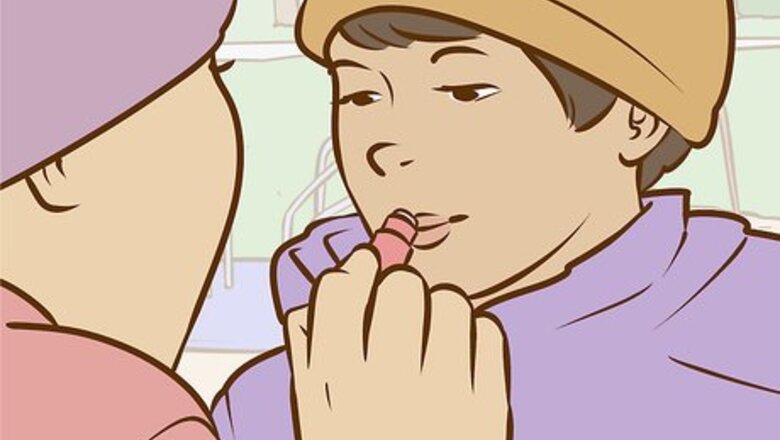
views
Applying Topical Agents

Apply an oil-based product to your toddler’s lips. There are a number of ointments and oils that might fix your toddler’s chapped lips. For instance, you could wipe a thin layer of petroleum jelly, olive oil, or vegetable oil over your child’s lips. You could also pierce a vitamin E capsule with a pin and squeeze a bit of the oil inside onto their lips.

Apply lip balm to your child’s chapped lips when they go out in cold, dry weather. Use a clean cotton bud to apply balm on their chapped lips, just enough to cover the affected area. Apply the balm once in the morning and once before going to bed. Reapply shortly before you go outside. Balms that contain beeswax or petroleum are the most effective. Avoid the urge to use your finger to apply lip balm. Doing so could introduce germs to your toddler’s chapped lips. Don’t use flavored or scented lip balms, which might encourage your child to lick their lips. Don’t use lip balms containing camphor or phenol, which can dry your lips out.

Use a lip balm with an SPF of at least 15 if your child will be going outside. Excessive sun exposure can contribute to chapped lips. A balm with an SPF of 15 or greater can protect your toddler's lips from the sun. Sunscreen is only acceptable on your child’s lips if it is incorporated into a lip balm. Don’t put sunscreen directly on their lips.
Making Behavioral Changes
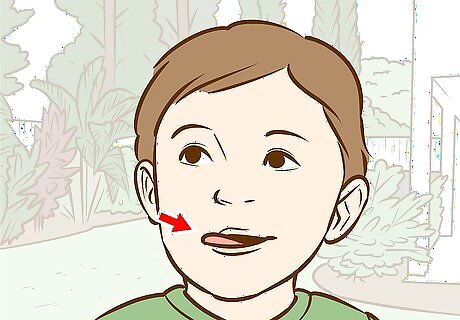
Don’t tell your child to stop licking their lips. Toddlers are often naughty and don’t take well to directions. Drawing attention to the problem will likely lead to increased, not decreased, lip-licking.
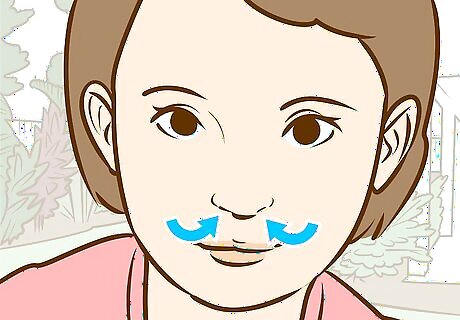
Encourage your child to breathe through their nose rather than their mouth. The air coming from their mouth will constantly pass over their lips and dry them out. Demonstrate the proper breathing technique for your child when you notice them breathing through their mouth.
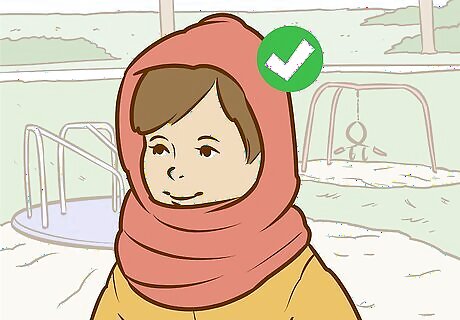
Wrap your child’s mouth and nose in a scarf during the winter. Winter weather will contribute to the drying of your child’s lips by making their lips lose moisture. A scarf can protect your child’s chapped lips from the cold, dry weather that exacerbates their condition. In a cold weather, try to get your child to play indoors.
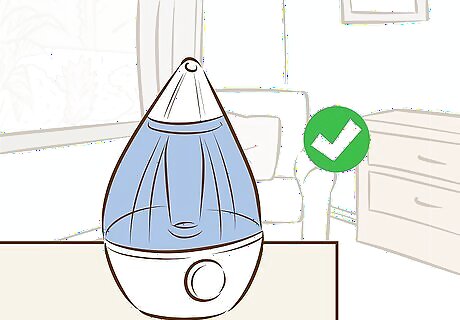
Install a humidifier in your child’s room. Your toddler’s lips might become dehydrated during periods of cold, dry weather. Place a humidifier in your home or in your child’s room to prevent the air from becoming too dry.
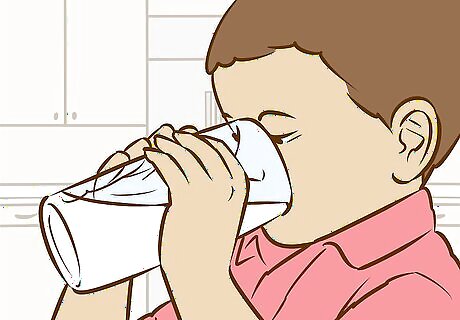
Make sure your child drinks 8 to 10 glasses of water a day. Dehydration is a major source of chapped lips. If your child is not getting enough water, they might suffer from chapped lips. Offer them water at mealtimes and play times throughout the day to prevent dehydration.
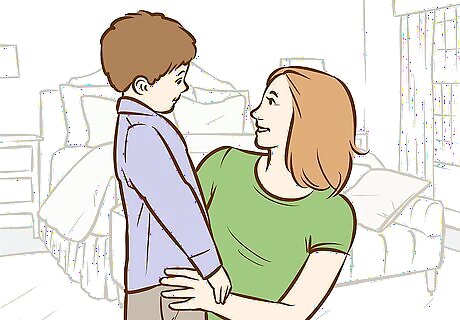
Reduce your child’s anxiety. Anxiety is often a cause of lip licking. Talk to your child regularly in a kind and reassuring way. Provide a stable, safe environment for your child to play in, and keep them away from stressful situations (like, for instance, barking dogs or mean children who might scare them).
Managing Irritants
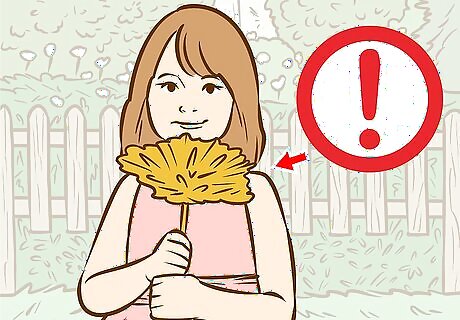
Keep your toddler away from allergens. Some fragrances, dyes, and other potential allergens can cause your toddler to develop chapped lips. If you know that your child has an allergy, work to limit their exposure to it. Additionally, do not apply cosmetics like lipstick to your toddler, as they often contain chemicals that might cause an allergic drying reaction on your child’s lips. If you believe that your child might have allergies, take them to a doctor. The doctor can perform tests to see what exactly is triggering your child's reaction.

Check the label of your child’s toothpaste. Toothpastes that contain an active ingredient called sodium lauryl sulfate may cause the lips to dry and can even irritate them, leading to chapped lips. Check the ingredients label on your child’s toothpaste to ensure it does not contain sodium lauryl sulfate. Ensure that your child’s toothpaste also does not contain cinnamates, which can be irritating for someone with chapped lips.

Don’t give your child citrus fruits. The acid in citrus fruits has a tendency to irritate the lips and can cause your child’s lips to become sensitive to sunlight. As a result, the moisture from their lips quickly evaporates in the sun, leading to chapped lips. Citrus fruits to avoid include lemons, oranges, grapefruits, mandarins, pomelos, and limes. If you are concerned about your child's vitamin C intake, you can give them kale, peppers, broccoli, or strawberries instead. Talk to your doctor about other sources of vitamin C.

Add vitamin B to your child’s diet. Vitamin B deficiency can contribute to chapped lips. Feed your child more foods with Vitamin B, including meat, fish, leafy green vegetables like spinach and kale, whole grains, and nuts. The exact amount of vitamin B your child needs depends on their weight and age. Talk to your pediatrician to determine exactly how much vitamin B you should be giving your child.
Dealing With More Serious Cases

Take your toddler to the ER or call your doctor if they have cracked red lips and a fever for five days or more. These symptoms could indicate a more serious condition, but only a doctor will be able to make an accurate diagnosis. While serious problems are rare, they need to be taken care of immediately. Your toddler should also see a doctor if their chapped lips are accompanied by other symptoms of illness (for instance, if they cough, wheeze, or struggle to breathe) or if they have a rash elsewhere on their body. If they are not drinking as much as usual, look for signs of dehydration. These include an inability to keep fluids down, a lack of energy, reduced urination, or a lack of tears when they cry.

Call the doctor if your child’s condition does not improve. If your toddler’s lips are cracked and not healing after two weeks of treatment, schedule an appointment with your doctor. If at any time your child’s lips are not only cracked, but bleeding, call the doctor immediately.

Take your child into your doctor if there are white patches on the inside of their mouth. Look on their tongue, inside of their cheek, inside of their lip, and on their gums for white patches. These patches coupled with chapped lips (and, especially, cracking or chapping at the corners of the mouth) can be signs that your child has a Candida or yeast infection. Your doctor may recommend the application of an anti-fungal cream or liquid to treat the infection. The precise application method for the medication your doctor recommends varies depending on the product. Consult your doctor or manufacturer directions for specific use guidelines.
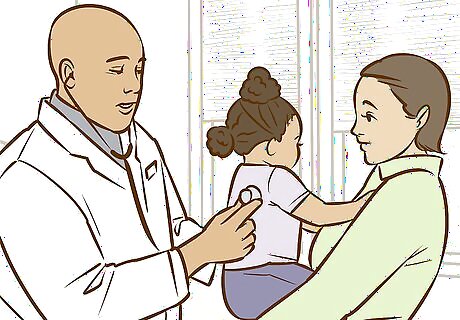
Have your child checked for dermatitis. If your child has red, scaly patches over their lips, the skin above and below the lips, and the skin on edges of the lips, they might have more than a regular case of chapped lips. These are symptoms of lip licker’s dermatitis, a medical condition. Your doctor will be able to recommend the best treatment, which typically consists of rubbing a thin layer of petroleum jelly over the affected area. If your toddler is affected by lip licker’s dermatitis, they might also have patches of eczema (dry, scaly skin) on other areas of their bodies, so look them over closely and let your doctor know if you find any such patches. In rare cases, your child might require a mild topical steroid, antifungal cream, or antibiotic cream. Your doctor will advise your regarding how to administer these additional treatments, should they become necessary. If dermatitis is the issue, try to encourage your child to stop licking their lips.
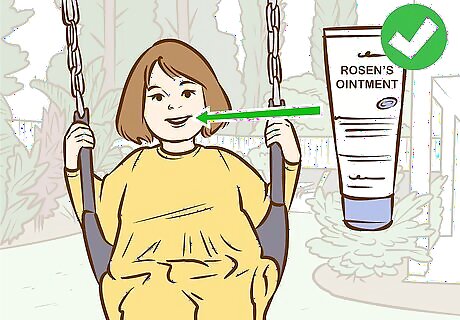
Apply Rosen’s Ointment to your child’s lips. Rosen’s Ointment -- also known as 1-2-3 Ointment -- is made of Burrow’s Solution, a topical agent used to treat swelling, rashes, and skin irritation. It also contains Aquaphor, a skin moisturizer, and zinc oxide. Apply the mixture liberally over your child’s chapped lips. Rosen’s Ointment is not available commercially but your pharmacist can prepare it for you.




















Comments
0 comment